In what follows a list of reflections of the Fab Learn training I took between the 22-26 May 2017 at the University of Stanford.
Day 1:
Today’s workshop was run by Fab Learn. Some interesting points that emerged are as follows,
1) Fab Learn are laboratories for technologies to explore, not technologies to teach. This means that a Fab Learn technology should be a way for experiential learning, rather than a substitute for a teacher. Such learning technologies should foster the ability among students to discover the world, to be surprised by it, and to engage in a curious way with the environment.
2) A Fab Learn space can really help students understand the technology that surrounds us, and which we often very little know of. We did an activity with a GoGo Set, which is a computer programming device. The exercise was to write a program and create a robot in an hour. This was an amazing experience. One very important insight was that in these settings a lot of facilitators are needed, at least 3 per activity for a group of 15. This is because with technology students need guidance in using and troubleshooting the technology. Without that guidance, the group will not complete the task.
3) Constructivism and ‘constructionism’ are at the basis of a Fab Learn approach.
4) Typical problems of a Fab Lab: too much investment in technology and no investment in training pedagogists and teachers to use it in progressive ways; technology is used to do the same things that normally are done in education and not to see the world through a new lens; there is no (appropriate) measure of the impact that the Fab Lab has on learning.
5) Research is very important in connection to a Fab Lab. This can include different types of research such as academic research, research on the use of the space and the machinery, action research, or other kinds of special research to examine specific or previously unstudied issues.
6) Key for the success of a Fab Lab is, first, a feedback cycle and second, student-centered and teacher-centered equilibrium – both teacher and students need to have a say in the leading of the activities.
Day 2:
One of the things that we did today was to visit and observe second and third graders in the school Costaño in East Palo Alto. Here are some of the things that I learned today about Fab Learn (just to clarify – a Fab Learn is like an atelier, is a project-based space where project-based learning occurs, but that specifically uses very rich technology for exploration and learning):
- a makerspace is not just about technology, but it is also about creativity and art

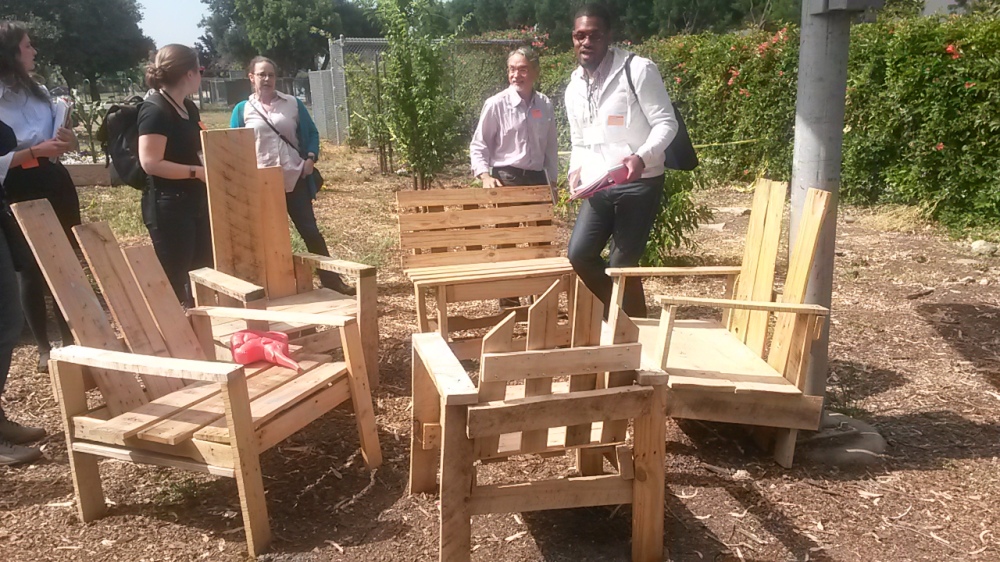
- a makerspace is different from a physics or biology laboratory, through these spaces can collaborate
- not much expensive technology is needed for a makerspace (there is a difference between a makerspace, a Fab Learn, and a Fab Lab such that not all Fab Learn are Fab Labs but they can simply be makerspaces!)
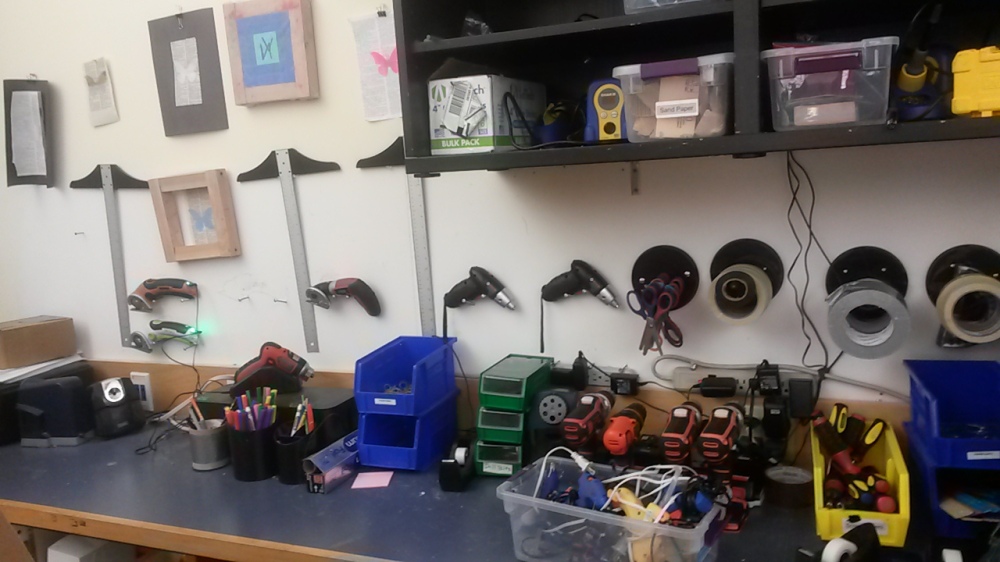
- a basic process of a Fab Learn is that the children ‘design, construct, and interact’ with what they need to learn
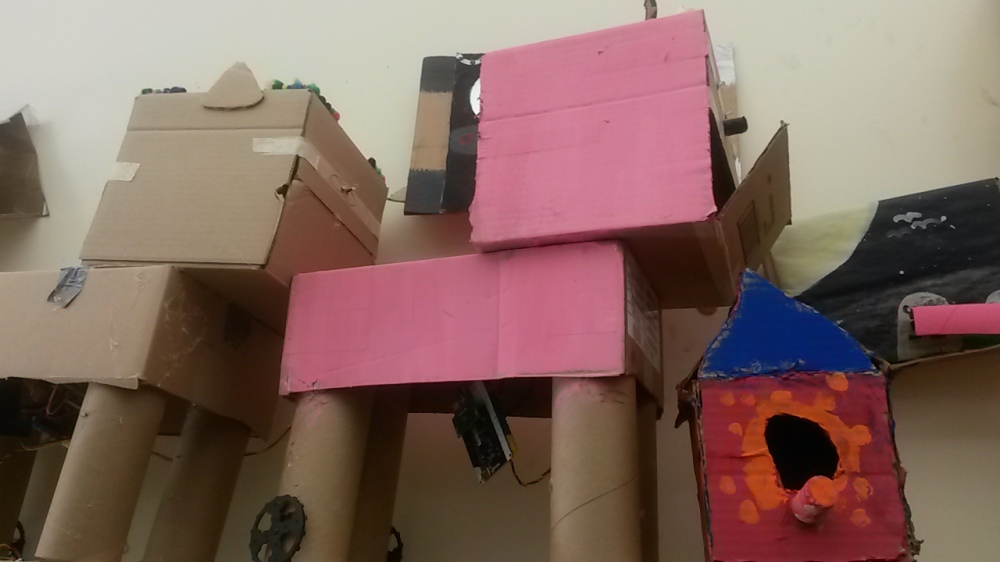
- a Fab Learn, like an atelier, is another way that can be implemented horizontally in the curriculum for experiential, constructivist learning
- a Fab Learn should create excitement about education
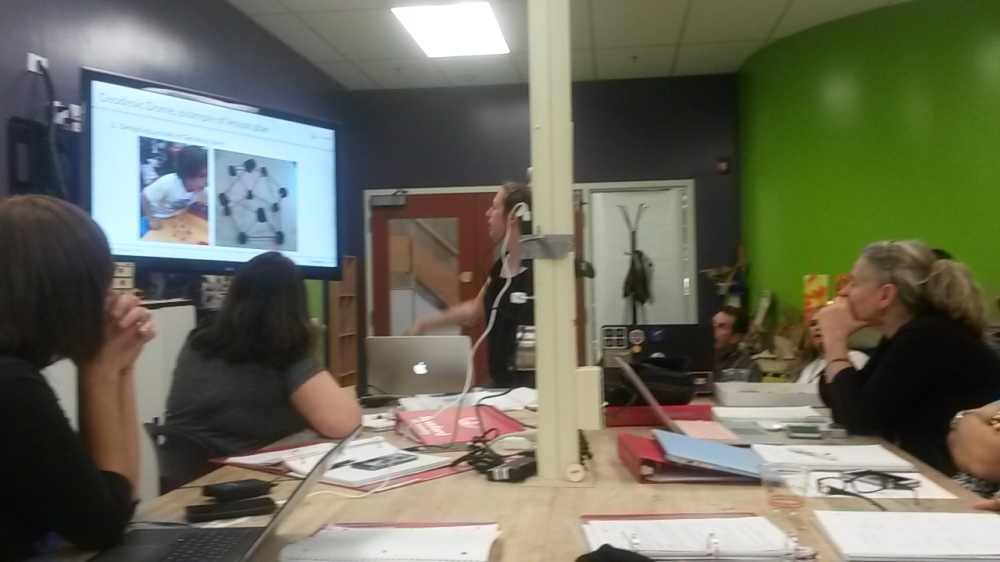
- Time for ordering and receiving the material is really important
- You need in a team: a manager, a material coordinator who assists in buying material and organise it in the space (and in between spaces), and a technician that provides technical support and ensures that the technology is always running
- Dont’s: do not force it on students or teachers but let the excitement about the space get to them; do not spend all the money on expensive material at the start because over time you will realise what you are missing and what you need; don’t do it alone; be flexible; don’t spend all the money on materials but also on training people!
Day 3:
Today was definitely one of the most informative and rich learning days I’ve had so far during this work trip. In what follows, I would like to focus on two main topics: what not to do when establishing a Fab Learn, and how to prepare a good list of technology in the Fab Learn.
What not to do, or the main obstacles in creating a new production space.
The main problems that occur are:
1) people spend all their money on technology, rather than on staff training. I realized that it makes sense to invest perhaps not more than half of the budget in technology and the rest in the people.
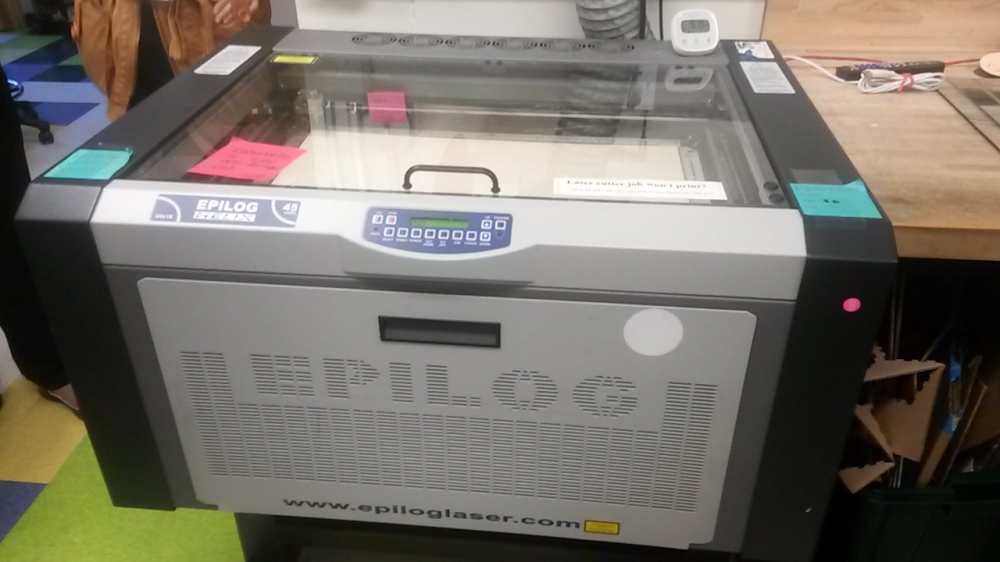
2) use technology to make nice products instead of meaningful learning
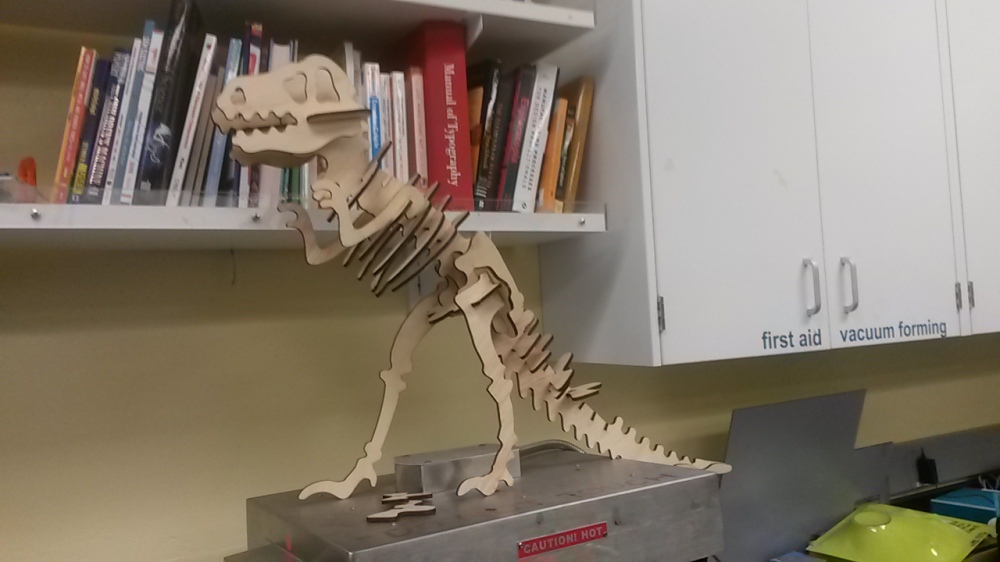
3) Fab labs can very easily become spaces for elites that already feel comfortable with making and high tech tools
4) there are costs to be accounted for as maintenance, consumables and training costs
5) the lack of research on Fal Learn justifying such intervention in the particular context
6) lack of integration of Fab Learn in the daily activities of the school and practices in the classroom
7) buy very expensive machine which costs a lot for maintanace and nowone knows how to use and it just stays there to take the dust
8) lack of appropriate and necessary personnel as: a person who manages the space, trained teachers, material manager and technology manager
There is a whole set of other important informations that emerged from todays class that pertain how to create a Fab Learn tool list. The fundamental point (and philosophy) underlying the Labs is constructionism, in this context understood as learning based on previous knowledge that occurs in significant ways in the interaction with tools. So – on the basis of this how do we make a good list about what to include in a Fab Learn?
1) need to account for the needs of the community (is for example interculturality important in your context? if so, what kind of technology counts as intercultural in your context?)
2) need a variety of tools that meet, in different ways, the following conditions: high treshold, wide wall and high cealing.
3) age-appropriate technology
4) ask the question, is the technology learning-rich for the students, and not just for the learners?
5) the point of buying stuff is not to get the students to get jobs, because technology is soon out of date
6) think about maintenance costs when selecting the tools
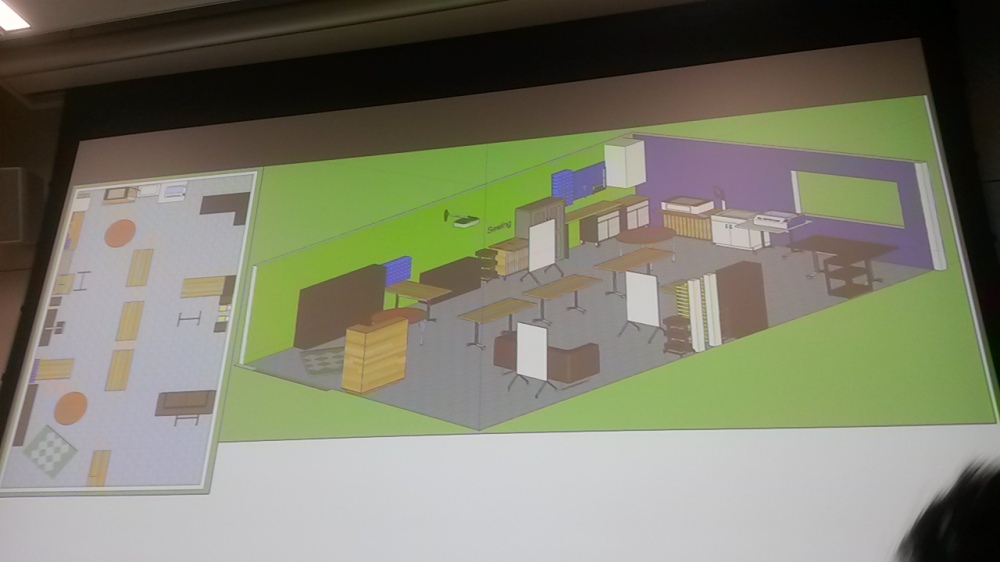
7) the space itself needs to have some characteristics: it needs to be a welcoming and inspiring space; it needs to be accessible and inviting, it needs to be inclusive and gender equal; it needs to be flexible and it needs to include storage for projects that are in progress and final projects. The labelling system of machines should occur mainly by actions as often the names are extremely technical and they are not user friendly. The tools need to be accessible by students. There needs to be places to display students’ work and that show documentation of the creation process.
In what follows, a few reflections about the last two days of training
Day 4:
Today we visited two schools. The first school is ‘Belle Heaven’, the second ‘Palo Alto Academy’.
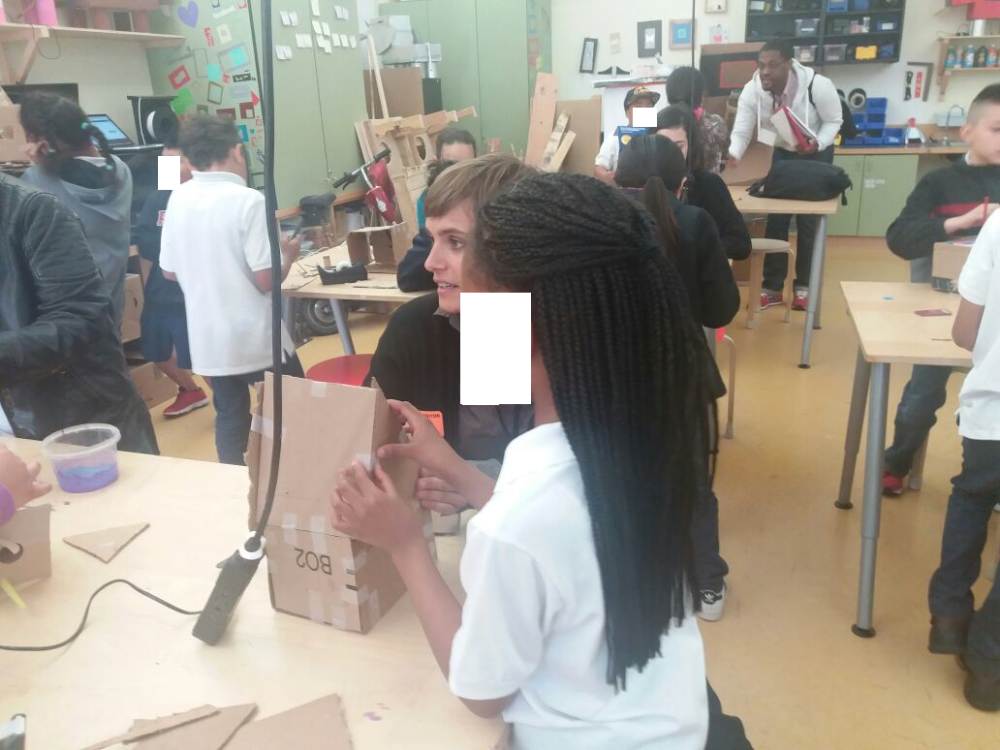
At Belle Heaven Elementary school (a public school), we visited the space while a 6th grade science class was taking place. The Lab Manager – the person who runs and manages the space turning the space into a pedagogical space –worked closely with the math and science teacher. The children were working on constructing some robotic pets.
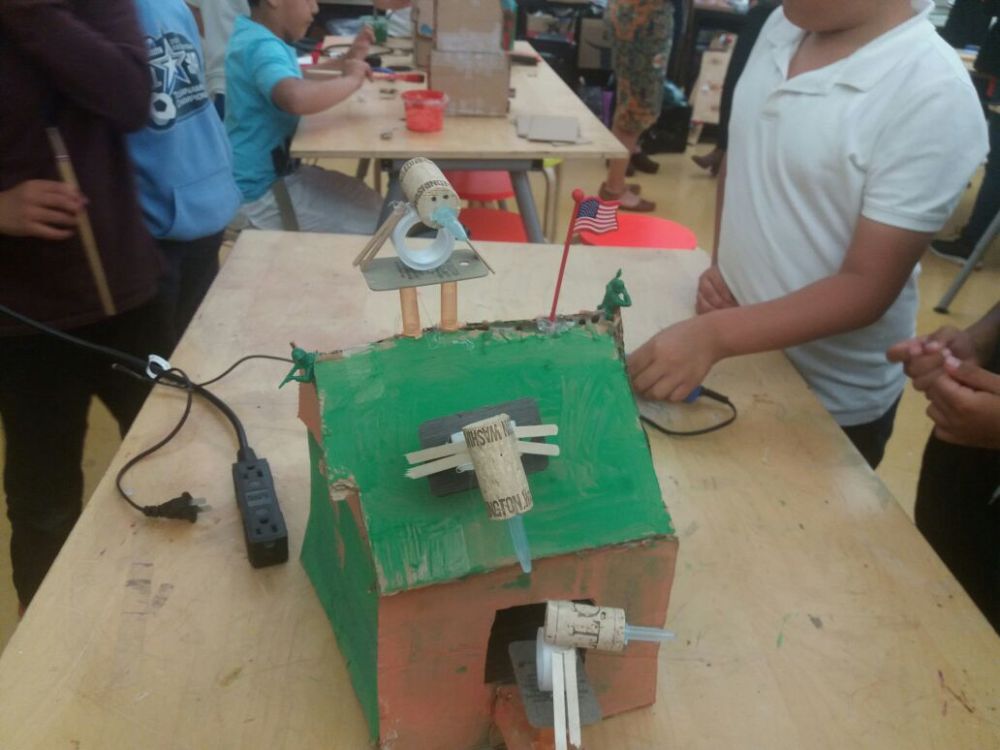
A few relevant points that emerged from the visit were: 1) the importance of the collaboration between the Lab Manager and the teacher in order to enable for the construction and the design to be an educational process connected with the curriculum. The collaboration between the two figures enabled the students to learning both about robotics and about math and science in the process of construction. 2) the difficulty of students who are used to receive instruction to follow a ‘project-based’ learning kind of approach. In the school, teachers found useful to use ‘TeachHive’ as a site of reference and as a way to begin to overcome this issue.
The second school we visited was ‘East Palo Alto Accademy’. This public high school turned its biology and physics lab into a makerspace. During the visit, I was very moved by one of the stories that one of the students in the class told me.
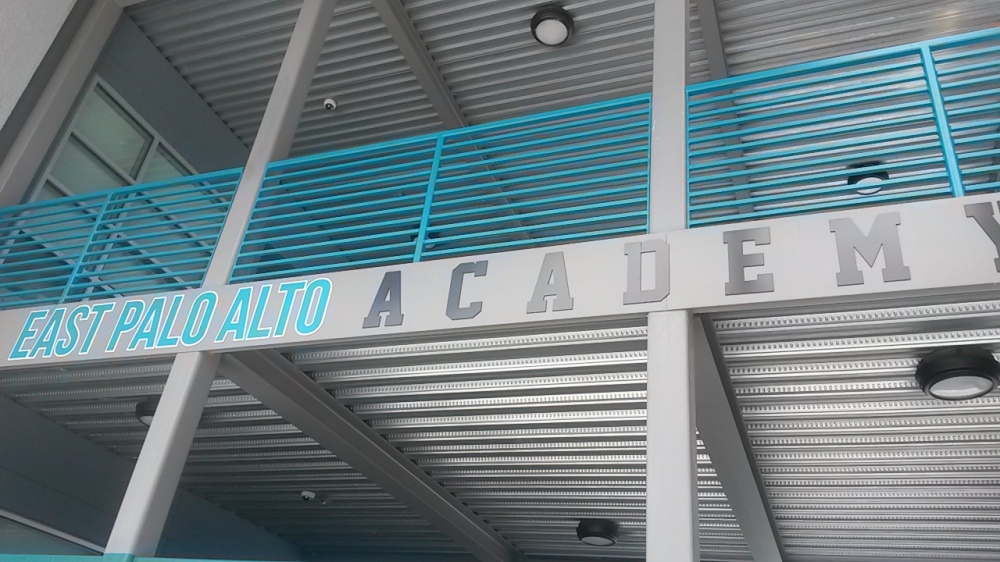
The student told me about his family story and some physical conditions that one of his family members struggled with, he also said that some of the objects that he was constructing in the lab were intended to help people that had such physical conditions like his family member. But what was more striking was the relevance of the importance of the Lab Manager that clearly had become a mentor and a guide to him.
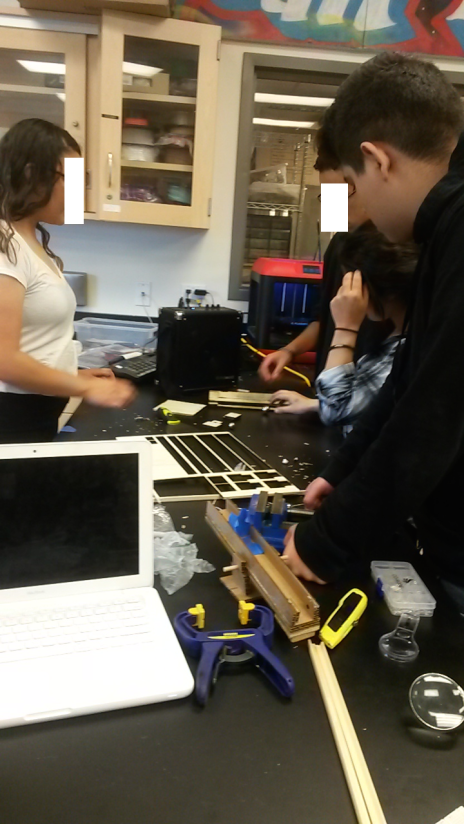
A few more quotes from my conversation with the students in the class that I found interesting:
‘Before this the lab was a physics only lab, and students would never come here on their own, the space was empty. Since we have this space, students want to come here and do stuff on their own in it all the time.’
‘Students see what other students do and they start to get into it’
‘I enjoyed the freedom that I have in this space to do things’
‘I had no idea what these machines were before they introduced them in the school’
‘Making the models helps me because what we learned in class sticked more in my head’
‘With the things I learned from (the Lab Manager), I was able to connect trigonometry and math to what I am doing’
Day 5:
The last day we presented our own project. I found really helpful some of the feedback that was given during the presentation. Mainly, I found helpful the suggestion that it is very important in the creation of an innovative school space to step back once in a while and rethink about the vision driving the space and imagine how that vision can be realised over time.


